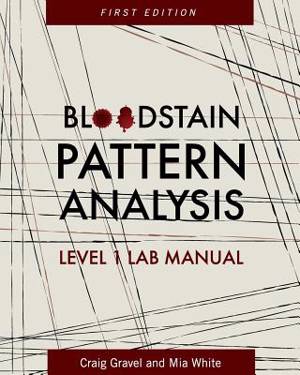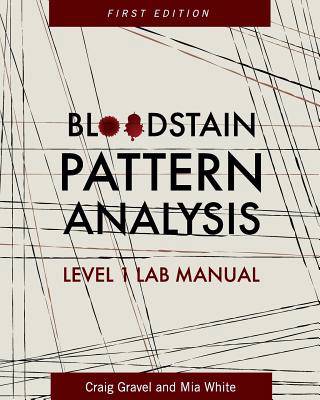
- Retrait gratuit dans votre magasin Club
- 7.000.000 titres dans notre catalogue
- Payer en toute sécurité
- Toujours un magasin près de chez vous
- Retrait gratuit dans votre magasin Club
- 7.000.0000 titres dans notre catalogue
- Payer en toute sécurité
- Toujours un magasin près de chez vous
Description
Bloodstain Pattern Analysis: Level 1 Lab Manual provides students with basic knowledge about bloodstain pattern analysis and the opportunity to conduct experiments to demonstrate the dynamics of blood in flight. The manual and associated exercises show how bloodstain pattern analysis is used as a forensic science discipline, illustrate the information that can be obtained from bloodstain evidence, and help students analyze actual bloodstain patterns.
Students learn the terminology and mathematics associated with the discipline and apply the information to sample bloodstain patterns. They are challenged to interpret specific patterns and to use their newfound knowledge to reconstruct a mock crime scene.
Upon completion of a course that uses this lab manual, students are qualified to join the International Association for Bloodstain Pattern Analysis, which is the first step toward taking the International Association of Identification Bloodstain Analysis certification test.
Bloodstain Pattern Analysis is a dynamic lab manual that is ideal for students taking introductory forensic science, law enforcement, or criminology courses. This resource could be especially helpful for active police officers and forensic scientists.
R. Craig Gravel is an instructor at the University of Central Oklahoma Forensic Science Institute, a certified Bloodstain Pattern Analyst, and a retired Oklahoma City Police Lieutenant. He served on the force for 25 years, working in the larceny, missing person, robbery and homicide units and serving as crime scene unit supervisor. He holds a master's degree in criminal justice administration from Oklahoma City University.
Mia L. White is a crime scene investigator at the Edmond Police Department in Edmond, Oklahoma. She holds a master's degree in forensic science from the University of Central Oklahoma Forensic Science Institute. She is a member of the Oklahoma division of the International Association for Identification and the International Association for Bloodstain Pattern Analysis.
Spécifications
Parties prenantes
- Auteur(s) :
- Editeur:
Contenu
- Nombre de pages :
- 138
- Langue:
- Anglais
Caractéristiques
- EAN:
- 9781516529964
- Date de parution :
- 15-11-18
- Format:
- Livre broché
- Format numérique:
- Trade paperback (VS)
- Dimensions :
- 203 mm x 254 mm
- Poids :
- 285 g

Les avis
Nous publions uniquement les avis qui respectent les conditions requises. Consultez nos conditions pour les avis.






